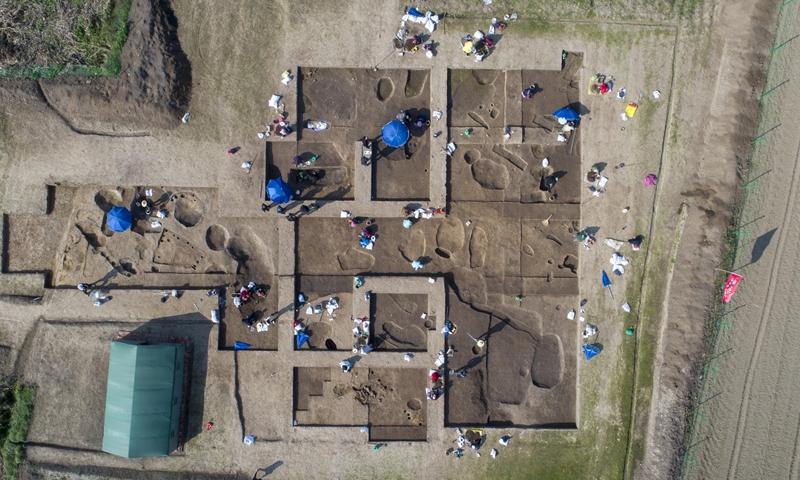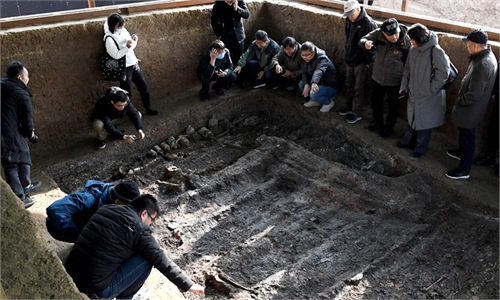ARTS / CULTURE & LEISURE
Four new Chinese archaeological discoveries of the Neolithic Age announced

A neolithic ruin about 5,000 years ago is excavated in Central China's Hubei Province. Photo: VCG
Four new important Chinese archaeological discoveries of the Neolithic Age were announced on Tuesday by the National Cultural Heritage Administration, including an ancient defense system and the largest prehistoric site in Central China's Hunan Province.
A prehistoric site, discovered in North China's Inner Mongolia Autonomous Region, shows the defense system of a Neolithic Age city. The ancient system consisted of ditches, gates and barbicans that acted as a fortified outpost or gateway, such as those found at a city's outer defense perimeter, as Southern Metropolis Daily reported. And the ruin found in East China's Shandong Province also has high archaeological value for the excavation of high-grade tombs and jade articles.
Another ruin, in Central China's Hunan, has been the largest prehistoric discovery in the province. The structure of the city was round outside but square inside, which is a first discovery of its kind in the middle reaches of the Yangtze River.
The construction of the ruined city is said to have begun 5,000 years ago, reaching its peak about 4,500 years ago and was then abandoned about 500 years later. Social structures had changed greatly, lasting for around 1,000 years. This information provides important materials for the study of social progress in the middle reaches of the Yangtze River.
Another archaeological discovery was also made in Hunan. The ruin was once a public cemetery of an early Xia Dynasty (c.2070BC-c.1600BC) settlement and has recently been fully uncovered for the first time in the Dongting Lake area, filling the gap in the archaeological understanding of the area's culture around 4,000 years ago.

